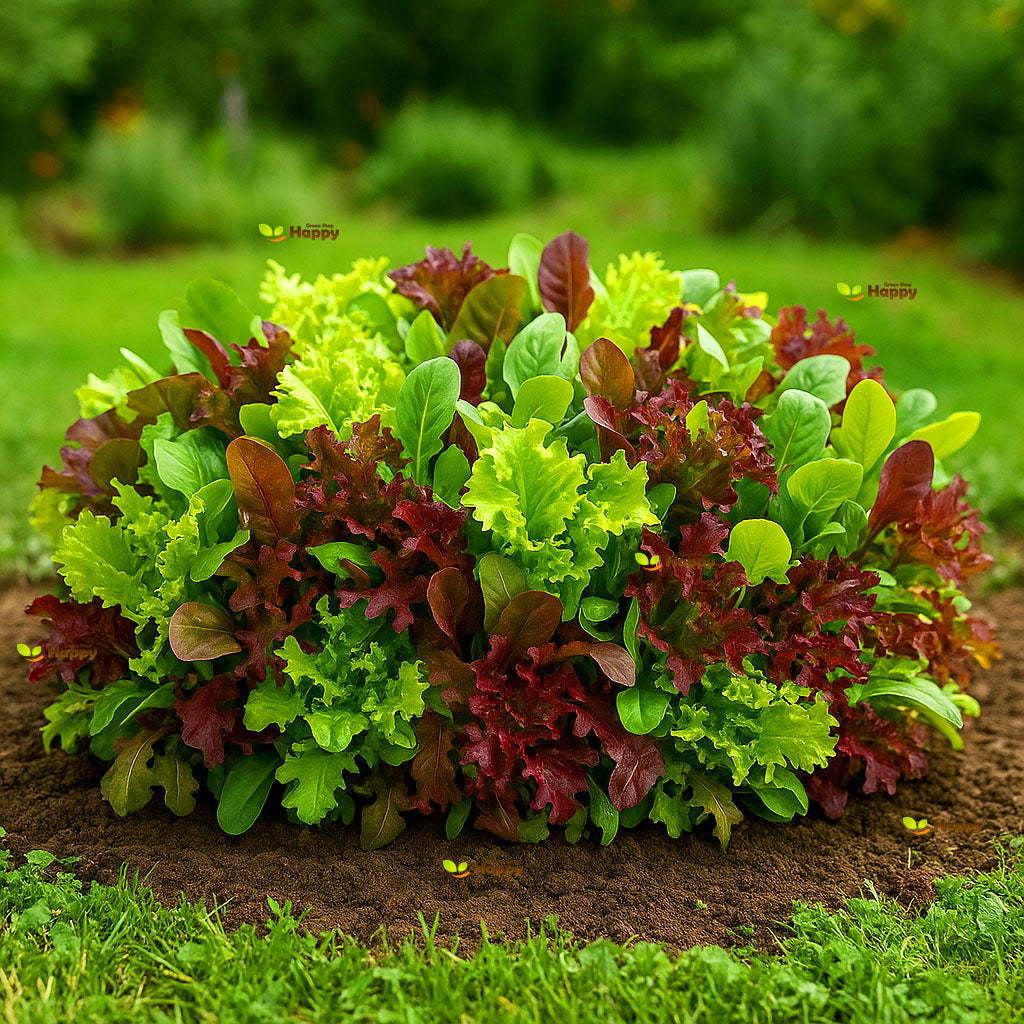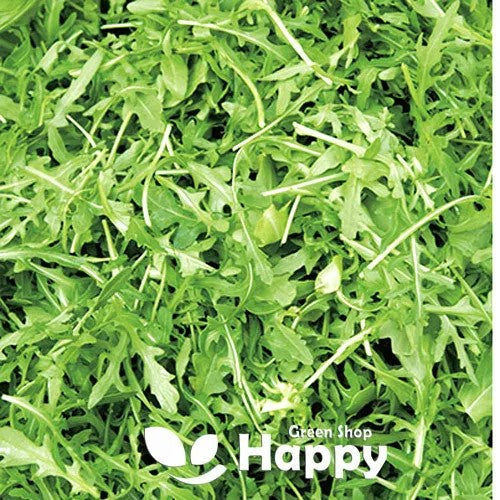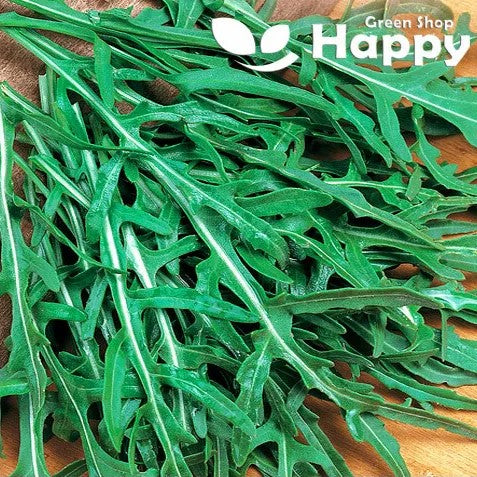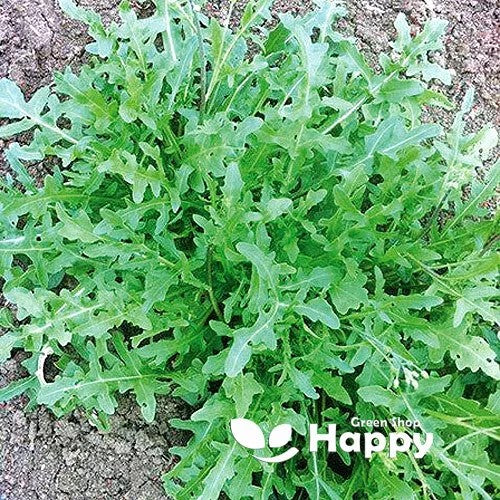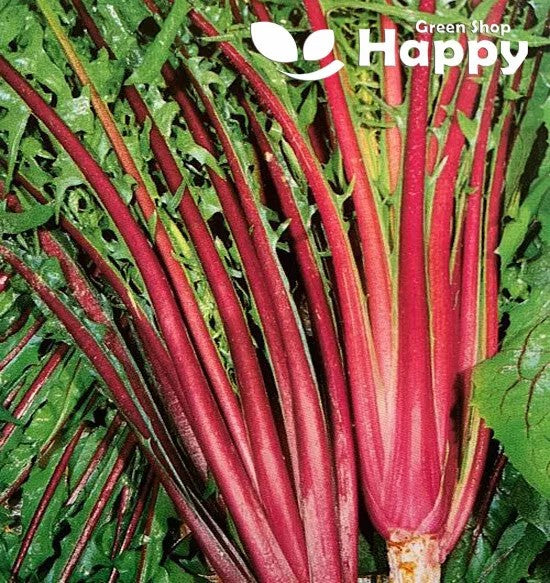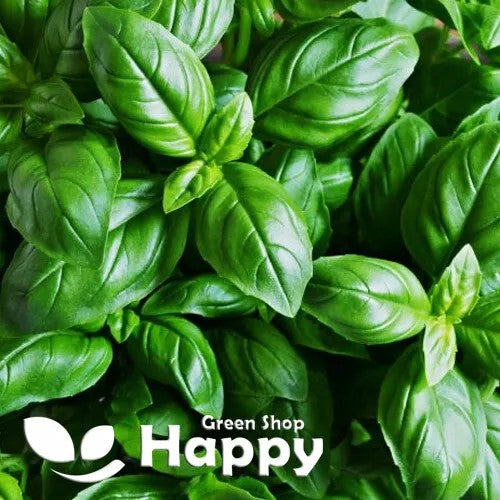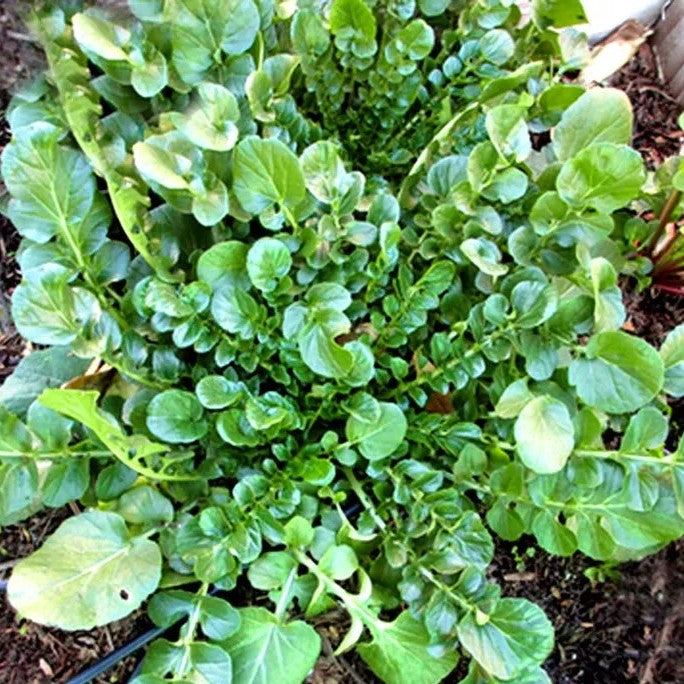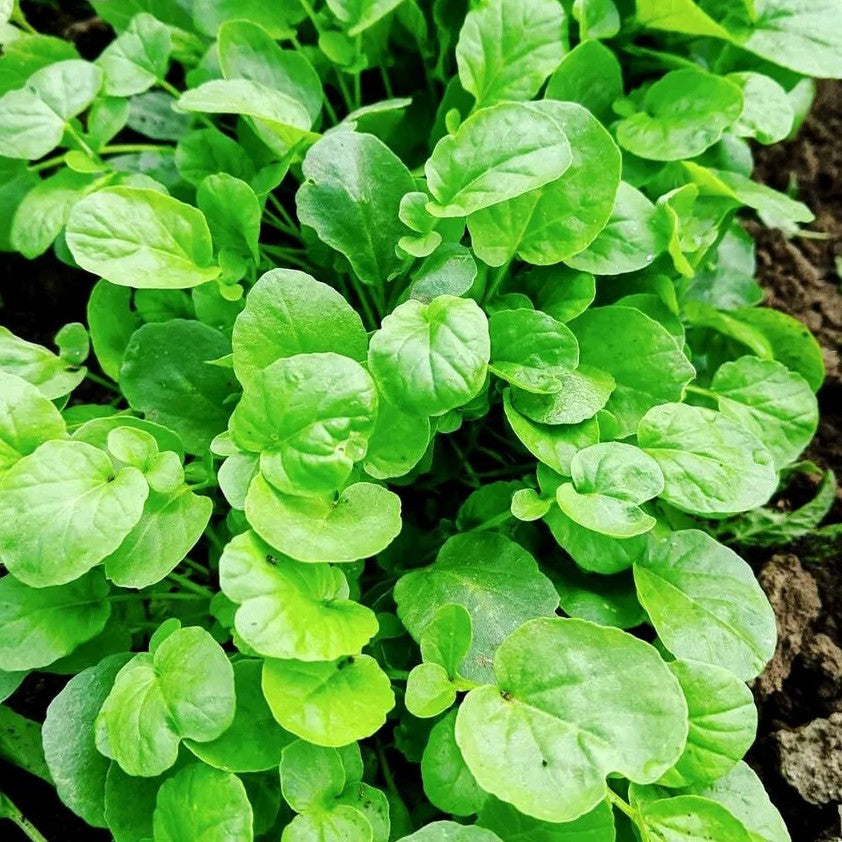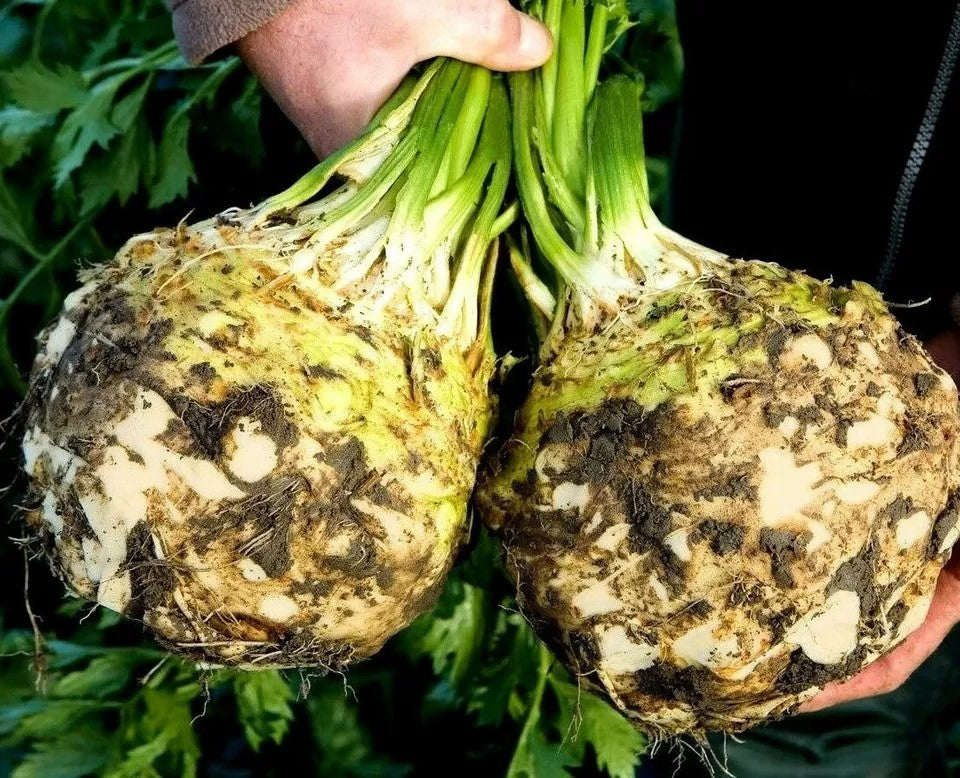Sort by:
10 products
10 products
Baby Leaf Mixture – Oriental Mix – 1000 Seeds
Description:
Enjoy fresh, flavorful greens with the Baby Leaf Mixture – Oriental Mix, a vibrant blend of fast-growing Asian salad leaves. This mix includes a variety of mild to spicy flavors and colorful textures — typically featuring Mizuna, Pak Choi, Tatsoi, Mustard, and other leafy brassicas. Perfect for cut-and-come-again harvests, this easy-to-grow mix thrives in beds, containers, and window boxes, offering a steady supply of nutritious greens all season long.
Key Features
-
Blend of flavorful Asian baby leaf varieties
-
Fast-growing and suitable for cut-and-come-again harvesting
-
Mild to spicy leaves with diverse textures and colors
-
Rich in vitamins and antioxidants
-
Easy to grow indoors or outdoors
Ideal For
-
Salads, stir-fries, and garnishes
-
Kitchen gardens and raised beds
-
Containers, window boxes, and balcony planters
-
Quick, fresh homegrown harvests
Sowing & Growing
-
Sow Indoors/Under Cover: February–September
-
Sow Outdoors: March–October
-
Germination: 5–10 days at 15–20°C
-
Spacing: Broadcast or thin to 10–15 cm apart
-
Harvest: 3–5 weeks after sowing
-
Light: Full sun or partial shade
-
Soil: Fertile, moist, and well-drained
Care Tips
-
Water regularly to keep soil moist
-
Harvest young leaves for best flavor
-
Re-sow every few weeks for a continuous supply
-
Protect from flea beetles with fine mesh if needed
Baby Leaf Arugula – Wild Wall Rocket – Seeds (Diplotaxis muralis)
Wild Wall Rocket (Diplotaxis muralis) is a vigorous, fast-growing salad green with small, deeply serrated leaves and a strong, peppery flavor. Perfect as a baby leaf crop, it adds a zesty kick to salads, sandwiches, and garnishes. Compared to regular arugula, it has a more intense taste and exceptional regrowth, making it ideal for repeat harvests throughout the season.
How to Grow
-
Sow directly outdoors from March to September in shallow drills (0.5 cm deep).
-
Space rows 15–20 cm apart.
-
For baby leaves, harvest when young; for larger plants, thin seedlings to 10 cm apart.
-
Prefers full sun to partial shade and well-drained soil.
-
Water regularly to prevent leaves from becoming too spicy.
Key Features
-
Strong, peppery flavor – spicier than standard arugula
-
Quick-growing, ready to cut in just 3–5 weeks
-
Continuous regrowth after cutting (cut & come again)
-
Excellent for salads, sandwiches, and garnishes
-
Rich in vitamins A, C, and minerals
Ideal For
-
Baby leaf production
-
Salad mixes and kitchen gardens
-
Gardeners looking for a stronger, wild arugula flavor
Sowing & Harvest
-
Sow: March – September
-
Harvest: April – October (baby leaves in 3–5 weeks)
Quick Tip
-
To enjoy tender leaves, pick regularly before plants flower. Succession sow every 2–3 weeks for a continuous supply.
Chicory Baby Leaf 'Italico Rosso' – Seeds (Cichorium intybus)
Add vibrant color and a tangy bite to your salads with Chicory Baby Leaf 'Italico Rosso'. This Italian variety is known for its deep red, slender leaves and pleasantly bitter flavor that balances perfectly with milder greens. Fast-growing and easy to harvest as baby leaves, it is a staple for gourmet salad mixes and year-round growing.
How to Grow
. Sow directly outdoors or under cover from March to September
. Scatter thinly and cover lightly with soil, keeping moist until germination
. Harvest young leaves at 5–10 cm for baby salad mixes
. For cut-and-come-again harvests, trim leaves regularly to encourage regrowth
. Prefers fertile, well-drained soil in sun or partial shade
Key Features
. Italian chicory with striking red baby leaves
. Distinctive tangy, slightly bitter flavor
. Quick to mature, harvestable in weeks
. Perfect for cut-and-come-again cropping
. Adds texture and color to gourmet salads
Ideal For
. Fresh salad mixes
. Gourmet dishes and Italian cuisine
. Cut-and-come-again harvesting
. Gardeners seeking unique leafy greens
Sowing & Harvest
. Sow: March – September
. Harvest: April – October
Quick Tip
Mix 'Italico Rosso' with milder lettuces and rocket for a balanced, colorful salad bowl.
Basil 'Italian Sweet Genovese' – Seeds (Ocimum basilicum)
Basil 'Italian Sweet Genovese' is the classic culinary herb prized for its aromatic, glossy green leaves and sweet, slightly spicy flavor. Perfect for pesto, salads, sauces, and garnishing, this variety grows vigorously and produces abundant foliage throughout the growing season. Ideal for home gardens, pots, and herb beds.
How to Grow
-
Sow seeds indoors from February to April, lightly covering with soil.
-
Maintain 18–22°C until germination.
-
Transplant seedlings outdoors after the last frost in a sunny, sheltered spot.
-
Prefers well-drained, fertile soil and regular watering.
-
Pinch off flower buds to encourage bushy growth and prolonged leaf production.
Key Features
-
Aromatic, sweet, and slightly spicy flavor
-
Classic Italian basil variety for culinary use
-
Fast-growing and productive
-
Suitable for garden beds, containers, and patios
-
Ideal for pesto, salads, sauces, and garnishing
Ideal For
-
Fresh culinary use in Italian and Mediterranean dishes
-
Herb gardens, raised beds, and container planting
-
Gardeners seeking high-yield, flavorful basil
Sowing & Harvest
-
Sow: February to April
-
Depth: Lightly covered
-
Harvest: May to October
Quick Tip
-
Regularly pinch young shoots to encourage bushy growth and prevent flowering, which can reduce leaf flavor.
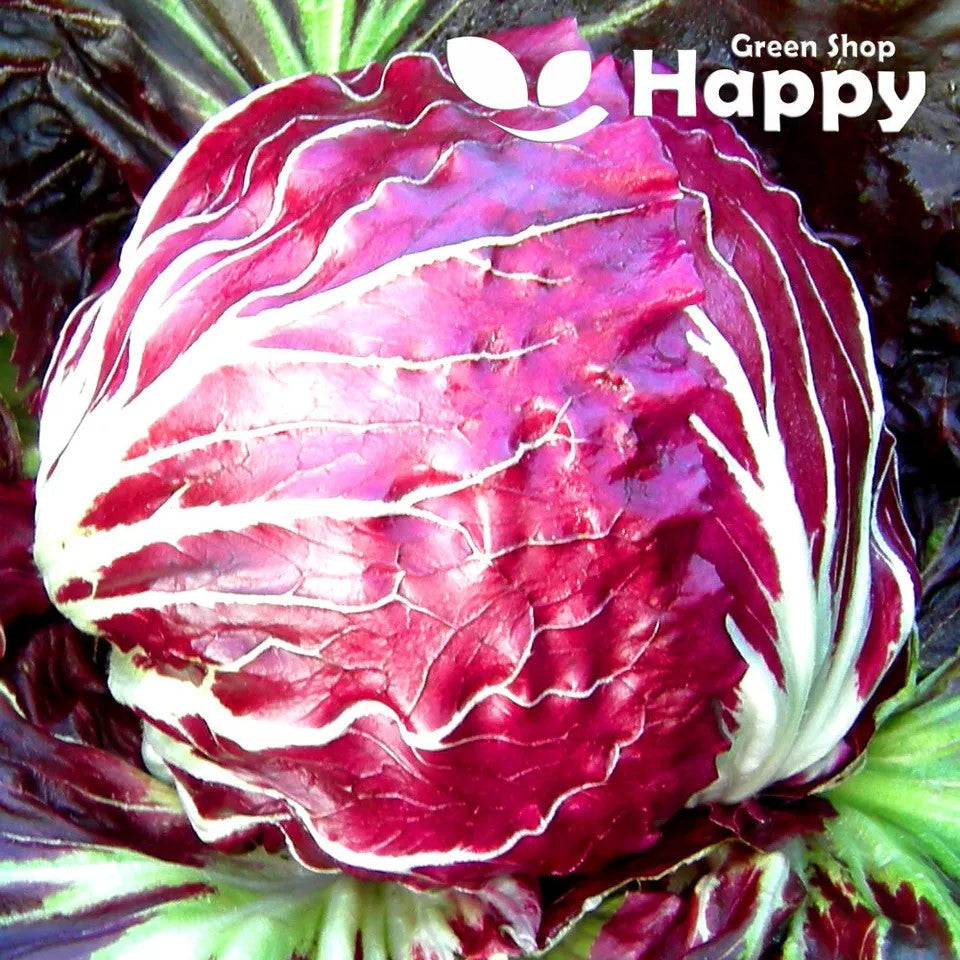
Baby Leaf "Radicchio Palla Rossa 3" - Chicory Endive Crispy Leaf - 1000 seeds
£1.15
Unit price perBaby Leaf "Radicchio Palla Rossa 3" - Chicory Endive Crispy Leaf - 1000 seeds
£1.15
Unit price perBaby Leaf “Radicchio Palla Rossa 3” – Chicory Endive Crispy Leaf – Seeds
Bring vibrant color and crisp flavor to your salads with Radicchio Palla Rossa 3. This Italian variety of chicory forms compact, round heads with striking deep red leaves and white veins, offering a pleasantly bitter yet refreshing taste. Perfect for baby leaf harvesting or grown to full maturity for classic radicchio heads, it adds both flavor and style to the plate.
How to Grow
-
Sow direct outdoors: March – September
-
Sow thinly in rows, 1 cm deep
-
Thin seedlings to 25–30 cm apart for mature heads
-
Prefers fertile, well-drained soil in sun or partial shade
-
Keep soil moist for tender leaves and full flavor
Key Features
-
Traditional Italian radicchio variety
-
Striking red leaves with crisp texture
-
Excellent for baby leaf or mature harvest
-
Adds unique flavor to salads and cooked dishes
-
Reliable, easy to grow crop
Ideal For
-
Fresh mixed salads and baby leaf blends
-
Classic Italian dishes
-
Autumn and winter harvests
Sowing & Harvest
-
Sow: March – September
-
Harvest: June – October (baby leaf) or later for mature heads
Quick Tip
Harvest some leaves young for baby salads and let others mature into full red heads for versatile use in the kitchen.
Baby Leaf "American Land Cress" – Seeds (Barbarea verna)
American Land Cress is a fast-growing, peppery leafy green ideal for baby leaf salads, sandwiches, and garnishes. Known for its crisp texture and tangy flavor, it adds a fresh, zesty note to spring and summer dishes.
Easy to grow and quick to harvest, this hardy green thrives in both garden beds and containers, making it perfect for continuous salad production.
How to Grow
-
Sow outdoors: March – September
-
Plant spacing: 5–10 cm between seedlings
-
Position: Full sun to partial shade
-
Soil: Fertile, well-drained soil
-
Care: Keep soil moist; thin seedlings to encourage tender growth
Key Features
-
Fast-growing, peppery leafy green for salads and garnishes
-
Tender baby leaves ideal for continuous harvest
-
Hardy and adaptable to garden beds or containers
-
Adds crisp texture and zesty flavor to dishes
-
Easy to cultivate for home gardeners
Harvest
-
Harvesting period: 20–30 days after sowing
-
Pick leaves regularly to encourage new growth and maintain tenderness.
Short Tip
Harvest young leaves for the best flavor and continuously sow every 2–3 weeks for a fresh, ongoing supply.
Arugula ‘Garden Rocket’ Seeds (Eruca sativa)
Bring a peppery kick to your kitchen garden with Arugula ‘Garden Rocket’ (Eruca sativa). This fast-growing leafy green produces tender, deeply lobed leaves with a zesty, mustard-like flavor that’s perfect for salads, sandwiches, pizzas, and pasta dishes. Easy to grow and quick to mature, rocket is a must-have for continuous fresh harvests all season long.
How to Grow
-
Sow seeds directly outdoors from spring through autumn.
-
Use fertile, well-drained soil in full sun or partial shade.
-
Sow seeds 0.5 cm deep in rows, spacing 10–15 cm apart.
-
Keep soil moist for steady growth.
-
Harvest young leaves within 3–5 weeks for the best flavor.
Key Features
-
Fast-growing leafy green with peppery flavor
-
Ready to harvest in just a few weeks
-
Perfect for salads, sandwiches, pizzas, and pasta
-
Easy to grow in beds, borders, or containers
-
Continuous cropping with succession sowing
Ideal For
-
Fresh kitchen use in salads and cooked dishes
-
Containers, raised beds, and garden borders
-
Quick, cut-and-come-again harvesting
-
Gardeners of all skill levels
Sowing
-
Best time: Spring to autumn outdoors
-
Depth: 0.5 cm
-
Spacing: 10–15 cm apart
-
Prefers sun or partial shade with well-drained soil
Quick Tip
-
Sow every 2–3 weeks for a steady supply of young, tender leaves.
Parsley Hamburg 'Alba' – Seeds (Petroselinum crispum)
Parsley Hamburg 'Alba' is a dual-purpose variety grown both for its large, white, parsnip-like roots and its flavorful parsley leaves. The roots are excellent roasted, boiled, or grated raw into salads, while the leaves can be used fresh as a garnish or in cooking. A versatile and easy-to-grow addition to the kitchen garden.
How to Grow
-
Sow outdoors: March – July, directly into well-prepared soil.
-
Thin seedlings to 15 cm apart in rows 30 cm apart.
-
Prefers fertile, light, well-drained soil.
-
Water regularly for strong root development.
Key Features
-
Root parsley variety with sweet, nutty flavor
-
Dual-purpose: edible roots & aromatic leaves
-
Easy to grow and hardy in most soils
-
Stores well after harvest
-
Great for soups, stews, roasting, and garnishing
Ideal For
-
Root vegetable dishes
-
Fresh parsley leaves for cooking
-
Kitchen gardens and allotments
Sowing & Harvest
-
Sow: March – July
-
Harvest: October – December
Quick Tip
For the best roots, loosen soil well before sowing to allow long, straight growth.
Celeriac ‘Albin’ – Seeds (Apium graveolens)
Celeriac ‘Albin’ is a dependable variety producing smooth, round roots with creamy white flesh and excellent flavor. Known for its tender texture and mild, nutty taste, this versatile root vegetable is perfect for mashing, roasting, soups, and salads. A slow-growing but hardy crop, it thrives in cooler climates and stores well through winter.
How to Grow
-
Sow indoors: February – April in trays or modules at 18–20°C.
-
Transplant outdoors: May, spacing 30 cm apart in rows 40 cm apart.
-
Prefers fertile, moisture-retentive soil in full sun.
-
Keep well-watered during dry spells to encourage large, smooth roots.
Key Features
-
Smooth, round roots with white flesh
-
Nutty, mild flavor for versatile cooking
-
Good storage qualities for winter use
-
Reliable variety for cool climates
Ideal For
-
Mashing, roasting, and soups
-
Winter storage and seasonal dishes
-
Home gardens and allotments
Sowing & Harvest
-
Sow: February – April
-
Harvest: October – December
Quick Tip
Remove side shoots during the season to focus the plant’s energy on swelling the root.
Showing 9/10


